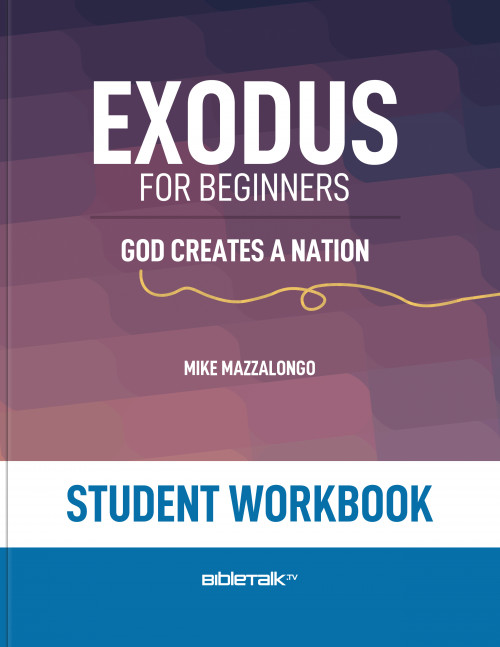The Covenant Between God and Israel
God Gives Moses the Plans for the Tabernacle - Part 1
So far in the book of Exodus Moses has described:
- Israel's release from Egyptian bondage made possible by the miraculous hand of God.
- The covenant God has made with Israel that includes the blessings promised by God and the Law and ordinances that the people are to obey as their part of the covenant.
- We've also seen the ratification of their covenant as Moses and other leaders have met with God on Mt. Sinai to confirm the covenant or promise or mutual agreement that:
- God has chosen the Israelites to be His special people selected to carry out His plan to bless the world (salvation) and as His people enjoy both earthly blessings (safety, health, prosperity) as well as spiritual blessings (they would know and serve the only true God who would dwell among them).
- In return for these blessings, they would live holy or separate lives as God's people defined by the Law (Ten Commandments) and the Book of the Covenant (ordinances and observances that defined the Law and helped define its application in daily living as well as one's worship to God).
This covenant relationship was to be the basis upon which Jewish life was to be lived. The covenant molded the Israelites into a unique mindset and style of living unlike any other nation around them at that time and for centuries forward until they brought forth the promised Messiah.
Until this point God has appeared and has manifested Himself through theophanies (dark cloud/column of fire/lightning/thunder/a voice) and most of these connected to Mt. Sinai. So long as the people were camped there, this is where God would interact with the leaders and the people.
The Israelites, however, would not remain there for long and would soon depart and so God would provide them with another place to meet. Not only a place to meet, but also a place to offer worship (part of the covenant) as well as a place to offer various types of praise and prayer and in His foreknowledge, a place where sins (failure to keep the terms of the covenant by the people) could be atoned for and forgiven by a merciful God.
This new place to meet would be movable and transportable in order to meet the needs of a people who would spend many years wandering from place to place in the wilderness.
And so, in chapter 25 we find Moses on Mt. Sinai with God who will give him the instructions necessary to put together the "Tent of Meeting" or "Tabernacle" which would become the physical center of the Israelite camp, as well as the spiritual center of their religious life as they wandered in the wilderness for 40 years.
I. The Commission – Exodus 25:1-9
1Then the Lord spoke to Moses, saying, 2"Tell the sons of Israel to raise a contribution for Me; from every man whose heart moves him you shall raise My contribution. 3This is the contribution which you are to raise from them: gold, silver and bronze, 4blue, purple and scarlet material, fine linen, goat hair, 5rams' skins dyed red, porpoise skins, acacia wood, 6oil for lighting, spices for the anointing oil and for the fragrant incense, 7onyx stones and setting stones for the ephod and for the breastpiece.
- Exodus 25:1-7
God begins by telling Moses to organize a special collection among the people:
- A freewill offering - In other words, not a tithe or tax obligation of any kind. A contribution based only on each person's love, gratitude, and respect for God.
- The offering was to be made up of valuable gifts. It asked that people offer the best of what they had (i.e. maybe the only gold one had was a treasured ring from a deceased parent). The offering cost you something whether rich or poor.
- The valuable things were to be used for practical purposes. They were not to be used to make a work of art or magnificent robes for Moses and the 70 elders. The gold was to cover a box (ark) or poles to carry the box or candlesticks. Practical objects.
8Let them construct a sanctuary for Me, that I may dwell among them. 9According to all that I am going to show you, as the pattern of the tabernacle and the pattern of all its furniture, just so you shall construct it.
- Exodus 25:8-9
It is in these verses that God summarizes the purpose for the collection of these various items:
- God wants them to build a sanctuary (a holy place) where He will dwell among His chosen people. Obviously, God does not live/reside in any structure made by man just as He does not live at the top of a mountain (Sinai). However, He meets with man as He had done with Adam, Abraham, Jacob, and Moses. Because of their covenant relationship, God promises to be present in a particular place to interact with His chosen people – the Tent of Meeting/Tabernacle. His Omnipresent nature enables Him to make this promise but not be limited by it either.
- In the final verse, He tells Moses that He will personally instruct Him as to the pattern or plan of the tabernacle itself, as well as its furnishings. Various scholars suggest that God either gave Moses a vision of the completed work, a plan, or written instructions, which Moses wrote down. My own thought is that God provided both a vision and written plan for Moses to use with the workmen in building the tent and its furnishings.
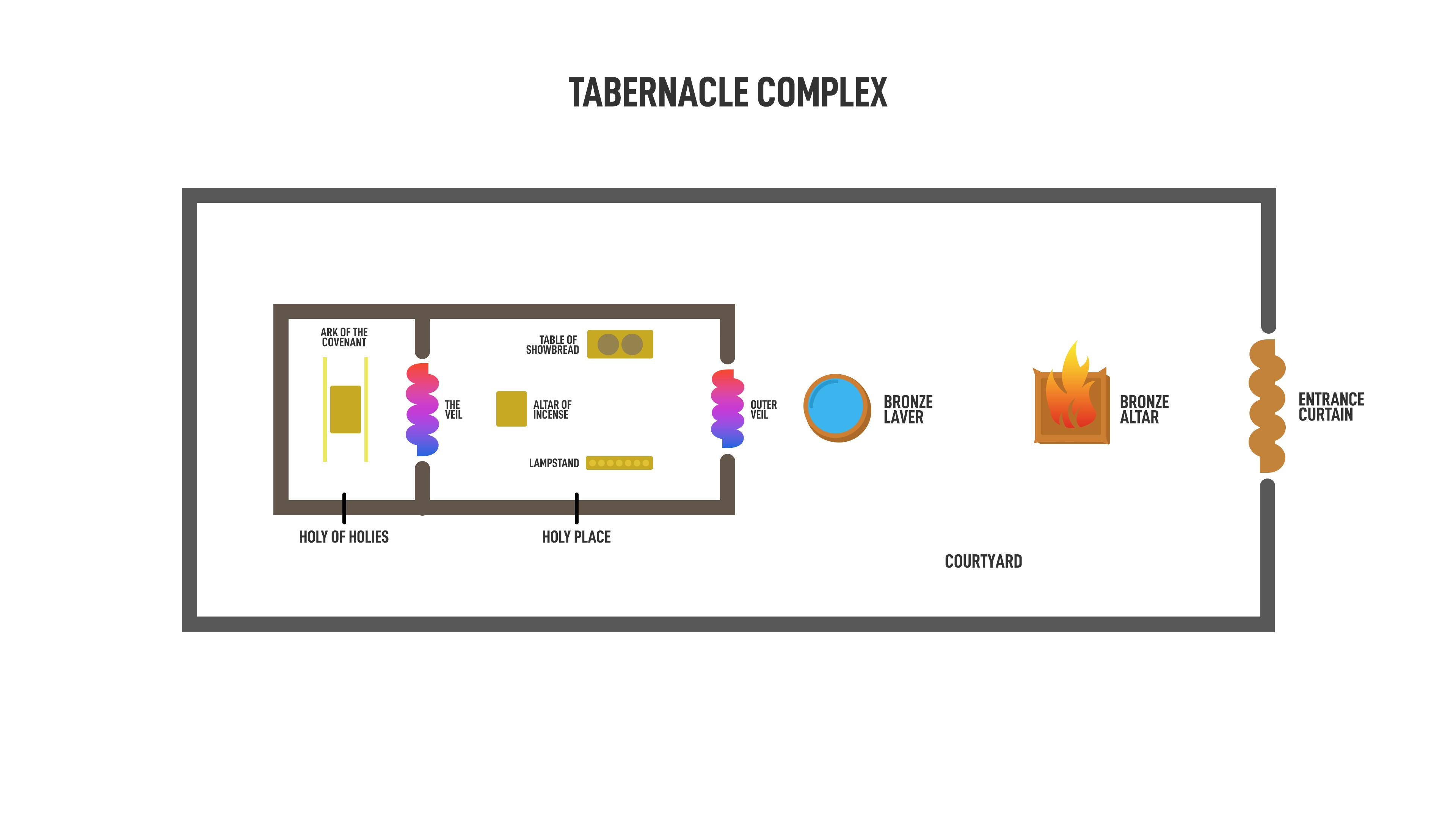
II. The Plan for the Tabernacle – Exodus 25:10-31:11
We don't have time to read and examine each object as well as its significance, too deeply, in this short introduction study, but we can review the list of items God instructs Moses to make in the order they were given. God began His instructions for building the tabernacle by describing the furniture which was to be placed within the tent. He begins by describing that which was most holy and located in the Most Holy Place – the ark of the covenant with the mercy seat and then he moves outward to the furnishings of the holy place followed by the requirements for the tent itself.
Here is the list in order given:
1. The Ark of the Covenant – Exodus 25:10-22
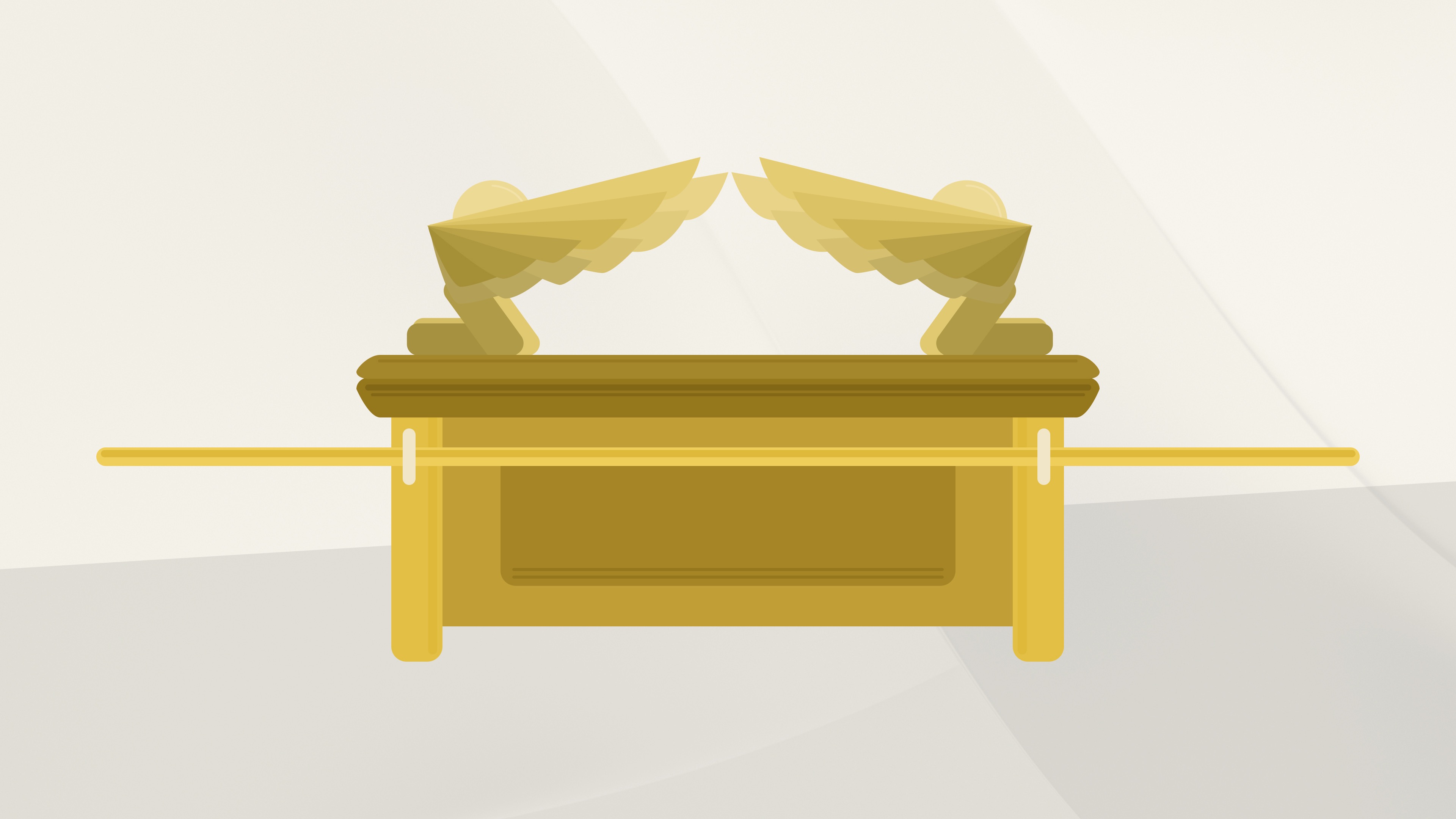
The Ark or "chest" was a box 45" long, 27" wide and 27" high, made of acacia (mimosa or thorn tree) wood. Deep brown, hard, water resistant – used mainly for furniture (i.e. dining room tables and chairs). The box/chest covered with gold had gold rings on either side so that the gold covered poles, also made of acacia wood, were permanently slipped into the loops/rings for the purpose of transporting the Ark. This would allow carrying without touching the Ark itself.
On top of the ark, serving as a lid was the Mercy Seat. This term in the Hebrew language simply meant "covering." The word had a double meaning.
- The covering or lid for the Ark itself.
- The "covering" of Israel's sins, when the blood of the sacrifice was sprinkled on the Ark's covering on the Day of Atonement.
Later on, God would give the Jews this holy day and observance to keep each year called, in English, the Day of Atonement – in Hebrew – Yom Kippur – meaning: Day of Covering. The lid or covering also had two angels facing each other and looking down at the Mercy Seat (lid). They were to be made of gold and fashioned as a single piece. Their wings were spread upward and covering the Mercy Seat. Verse 22 explains the reason for the Ark's special place in the inner room of the Tabernacle.
There I will meet with you; and from above the mercy seat, from between the two cherubim which are upon the ark of the testimony, I will speak to you about all that I will give you in commandment for the sons of Israel.
- Exodus 25:22
God's earthly throne was to be above the golden angels, which sat upon the seat/lid of the Ark of the Covenant which at first contained the stone tablets with the Ten Commandments inscribed by God Himself, and a jar of manna – the miraculous bread that fed Israel for 40 years in the desert, and eventually Aaron's budding rod.
2. The Table of Showbread – Exodus 25:23-30
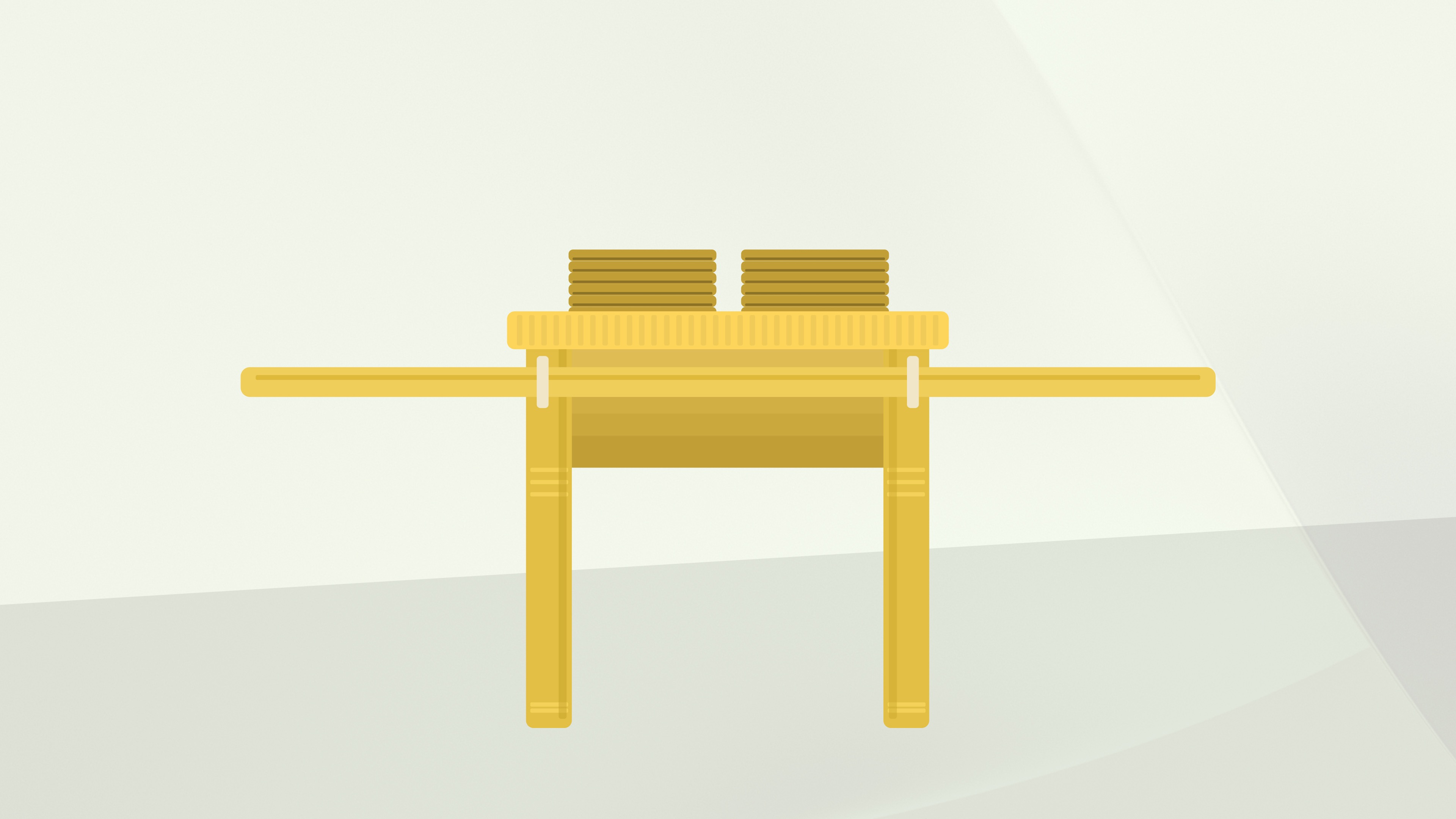
The remaining verses in chapter 25 describe two of the three items placed in the Holy Place, which was separated from the Holy of Holies by an ornate curtain.
Like the Ark, this table was made so that it would be carried from place to place with gold rings and poles. It was approximately 36" long by 18" wide and 27" tall and like the Ark, made of acacia wood and covered with gold. There are also vessels mentioned in verse 29 (dishes, pans, jars, and bowls) made of gold used in connection with the table. We learn later (II Kings 25:14-17) that these were carried off as spoils of war by Nebuchadnezzar when the Babylonians attacked Jerusalem in 597 BC – some 800 years into the future.
The table was used to carry the "bread of presence" or "showbread" – 12 loaves perpetually on the table. New bread replaced the old each Sabbath and only the priests were allowed to eat the old loaves. The bread probably represented the 12 tribes and signified the people's constant presence before God, and that even if there were 12 tribes, they were one people who belonged to God.
3. The Golden Lampstand
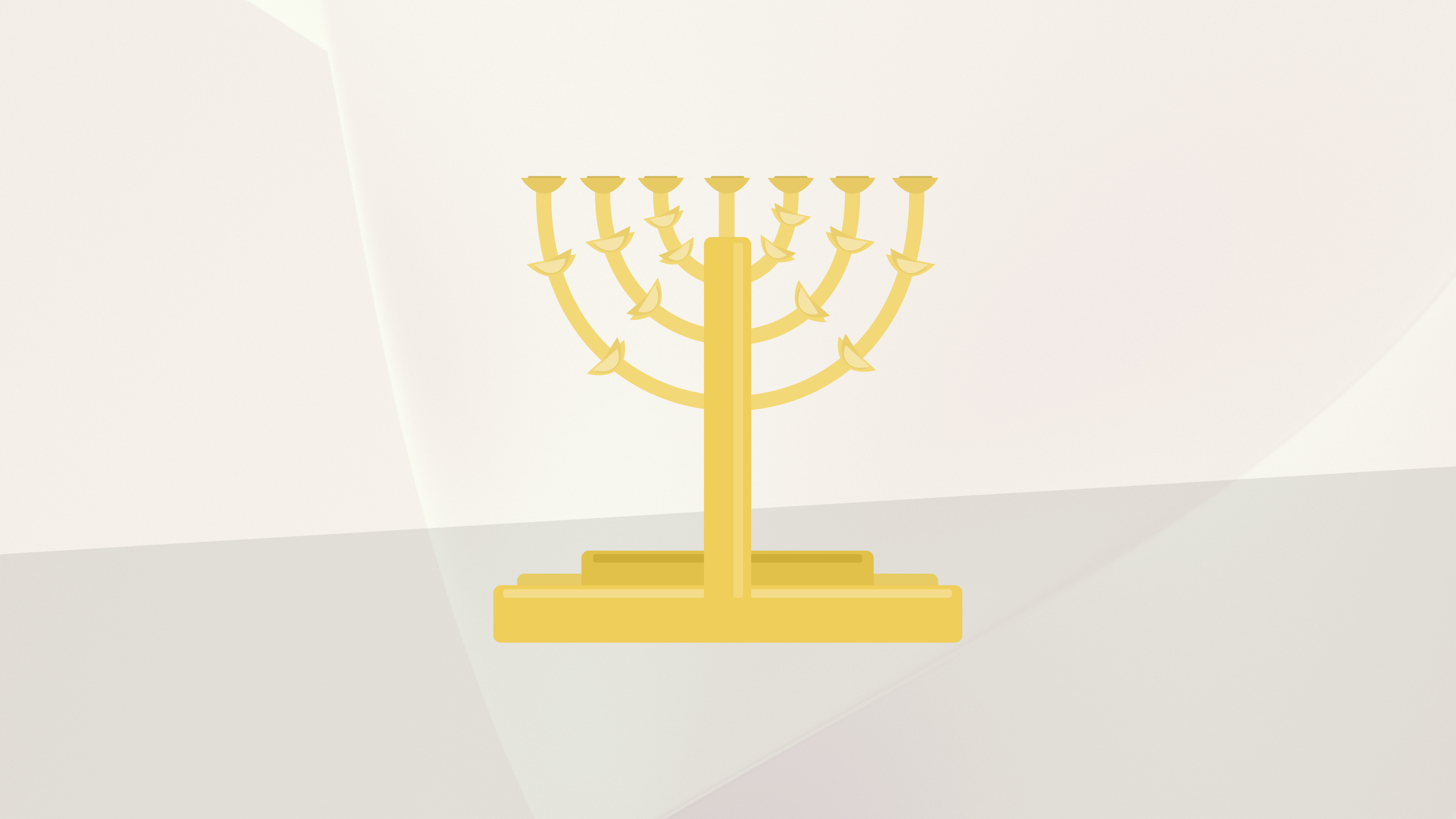
This object was also made of gold. It had a single shaft in the middle with six branches extending from it, each holding a single lamp, thereby forming a total of seven lamps. The Hebrew word for lampstand is "menorah" and the menorah became a universal symbol for the Jewish religion. The lamp only provided light within the tabernacle. Symbolically, the Jewish lamps represented perfection, the oil a picture of God's spirit, and the light, the truth that God's presence brings. The menorah certainly was identified with the Jewish people and the menorah's function as a light represented the light that God's people were to provide to a dark and unbelieving world. A famous depiction on the Arch of Titus in Rome is of the menorah from the temple in Jerusalem, carried off and displayed in a parade marking the Roman army's victory and destruction of Jerusalem in 70 AD.
There is a third object located here (Altar of Incense), but it is only described in chapter 30.
4. Curtains, Boards, Sockets, Veil, and Screen – Exodus 26:1-37
This chapter shift the focus from the furnishing of the tabernacle to the coverings, framework, and veils (one veil separated the Most Holy Place from the Holy Place – inside the tabernacle and the other veil covered the entrance to the Holy Place from the outside). The tabernacle was designed to be assembled for usage and then disassembled and packed for transport and reassembled at another location. This is why it was largely made of panels, poles, hooks, loops, various cloth, animal skin covering and veils for doors, etc.
In his description, Moses begins with the object at the center of the tabernacle (the Ark) and moves his way out from this piece of furniture to the furnishings and space next to this central place, then to the tent that holds all of these objects, followed by the exterior courtyard and the objects located there, and finally concluding with the materials and manner that the exterior walls, that enclose the tabernacle area, are set up and the material used to create the enclosure of the tabernacle complex.
One thing to note is that the closer one is to the center (Ark), the more precious the materials used (gold) and the further away, the less precious (silver, bronze, etc.).
The "tent" portion of the tabernacle area is established by interlocking panels (2' x 20') that created the two sides and back of the enclosed area. Some scholars believe that these panels were like trellis frames, which would be lighter to carry and enabled the priests to see the beautiful designs stitched into the coverings that were placed over the trellis – like frames. Once the three-sided frame was set up, it was covered with two coverings:
A. A linen cloth of blue, purple, and scarlet with cherubim (angelic figures) stitched into the fabric about 42' x 6' made into two large sheets held together by golden clasps. These would be placed over the trellised panels, which would cover the top and three sides, but not the front – another veil was made for this.
B. A second covering of goat's skin, good to guard against extreme weather, larger than the linen cloth, held together with bronze clasps (further from the Ark) covered all four sides (front flap folded back for entrance).
Moses describes other coverings:
C. Ram skins dyed red were used for their good resistance to water, dew, rain, etc.
D. Porpoise skins is an uncertain translation, probably referring to the "sea cow" or the dugong, which were found in the Red Sea. This material was probably used to make "tent bags" or wrappers in order to transport the curtains and other objects necessary to set up the "tent" structure of the tabernacle complex from location to location.
E. The veil or inner curtain. This veil was used to divide the Holy Place from the Most Holy Place where the Ark was situated. It was strung across the width of the tent, hung on four pillars of acacia wood covered with gold. Like the first covering it was made of similar linen cloth, blue, purple, and scarlet, with images of angels stitched on it. This veil would be lifted only once per year when the high priest would enter to offer sacrifice for himself and the people for their sin.
F. The second veil was used as a front door to allow entry into the tent and also as a screen to prevent unauthorized people (non-priests/Levites) from seeing the objects and rites being performed. This veil was made of the same cloth and design as the inner veil and hung from hooks attached to five pillars of acacia wood covered with gold.
5. The Bronze Altar – Exodus 27:1-8
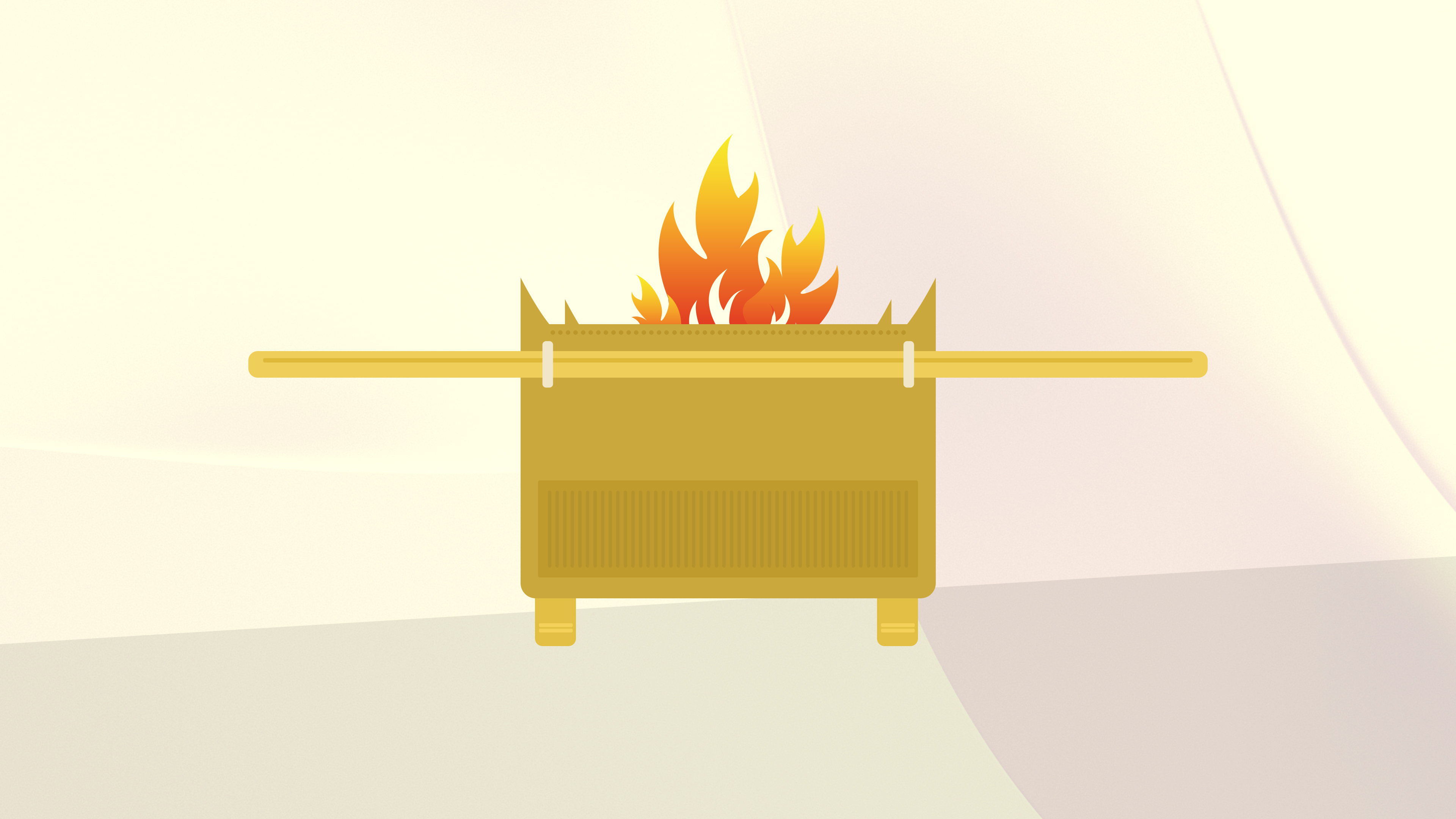
As you go outside from the tent enclosure, you find the Bronze Altar, or the Altar of Burnt Offering. It was a hollow box made of acacia wood and covered with bronze. It measured 7.5 feet squared and was 4.5 feet high. There were horn-like figures on each corner (shaped like cow or bull horns), which may have been used to secure animals in a certain position with ropes.
The priests also sprinkled blood on these horns when making a sacrifice. There later arose a custom in Israel that a person could take refuge by taking hold of the horns of this altar (I Kings 1:49). Also, instructions about producing utensils that will be used in the sacrifice of animals by fire (pails, shovels, basins, forks, and hooks, etc.). This object also had loops and poles so that it would be carried from place to place. Instructions and details about the types of sacrifice, the manner, times, and reasons to offer them are found in the book of Leviticus.
6. The Court of the Tabernacle – Exodus 27:18-19
The courtyard that enclosed the Tabernacle was in a rectangular shape of 150' x 75'. The "fence" That marked the courtyard was made of pillars set into sockets spaced 7.5 feet apart and connected with linen cloth. A veil made of the same materials and design as the ones in the tent, was used in the entrance way of the fence which was 7.5 feet high. There was also a bronze laver in the courtyard between the tent and the altar where the priests were to wash their hands and feet before offering a sacrifice on the altar or entering the tent - this was to be done under the pain of death. The information about this basin of water is only given later in chapter 30.
7. The Oil for the Lamp (Menorah) – Exodus 27:20-21
This oil was required to be available at all times since God required that the lamp stand with seven lamps be kept burning day and night. Only a certain kind of oil (clear oil of beaten olives) could sustain this requirement. From a practical perspective this was necessary since the menorah was the only source of light inside the tent for both day and night. This instruction, to keep the light burning continuously, became tremendously important to the Jews, in that God made this command that was to be kept throughout all their generations.
Summary – Lesson
There is more information about the Tabernacle, which I will complete next time (priestly garments, anointing oil, and incense), but before we finish, I'd like to point out a similarity between the Tabernacle and its function for the Jews and a similar function we have as Christians today. One of the basic functions of the Tabernacle, its equipment and the priest who served there was to act as intermediaries between God and the people who wanted to give something to God in the form of sacrifice.
Since people were unholy and because of this could not come before God themselves, they used the priests that God purified so they could come before Him on behalf of the people to offer thanks, ask for forgiveness, or offer praise - all done through the sacrifice of various animals.
In the New Testament, those who believe in Jesus are made clean and purified so they can now come before God in person, cleansed from sin.
7but if we walk in the Light as He Himself is in the Light, we have fellowship with one another, and the blood of Jesus His Son cleanses us from all sin. 8If we say that we have no sin, we are deceiving ourselves and the truth is not in us. 9If we confess our sins, He is faithful and righteous to forgive us our sins and to cleanse us from all unrighteousness.
- I John 1:7-9
We now can offer our own sacrifices to God, and not sacrifices of dead animals, but living sacrifices such as:
- The sacrifice of praise from our hearts and lips – Hebrews 13:15
- A sacrifice of good works – Hebrews 13:16
- A sacrifice of souls we've evangelized – Romans 15:13
- The sacrifice of ourselves as we live to obey, serve and glorify Christ consciously each day of our lives - Romans 12:1-2
The Tabernacle and all of its objects and furnishings were designed and given by God to represent and teach us larger truths and deeper spiritual revelations that were only revealed and made knowable with the coming of and belief in Christ.
If you believe in Jesus and know His words, then you will be able to unlock all of the mysteries of the religion and practices given to the Jews, because they were ultimately given and practiced for our edification who believe in the Christ, Jesus, and obtain the purity that leads to eternal life through Him.



